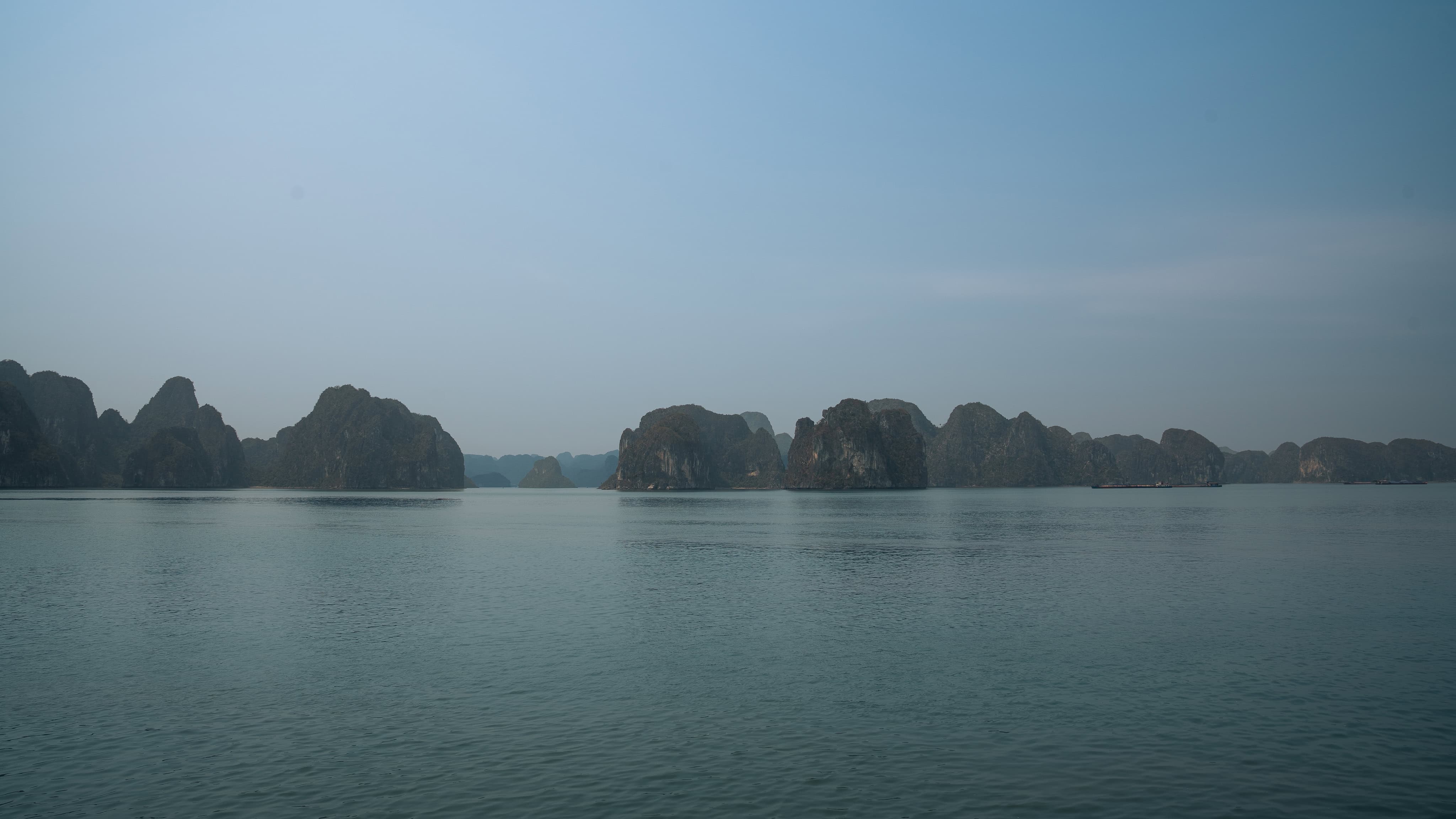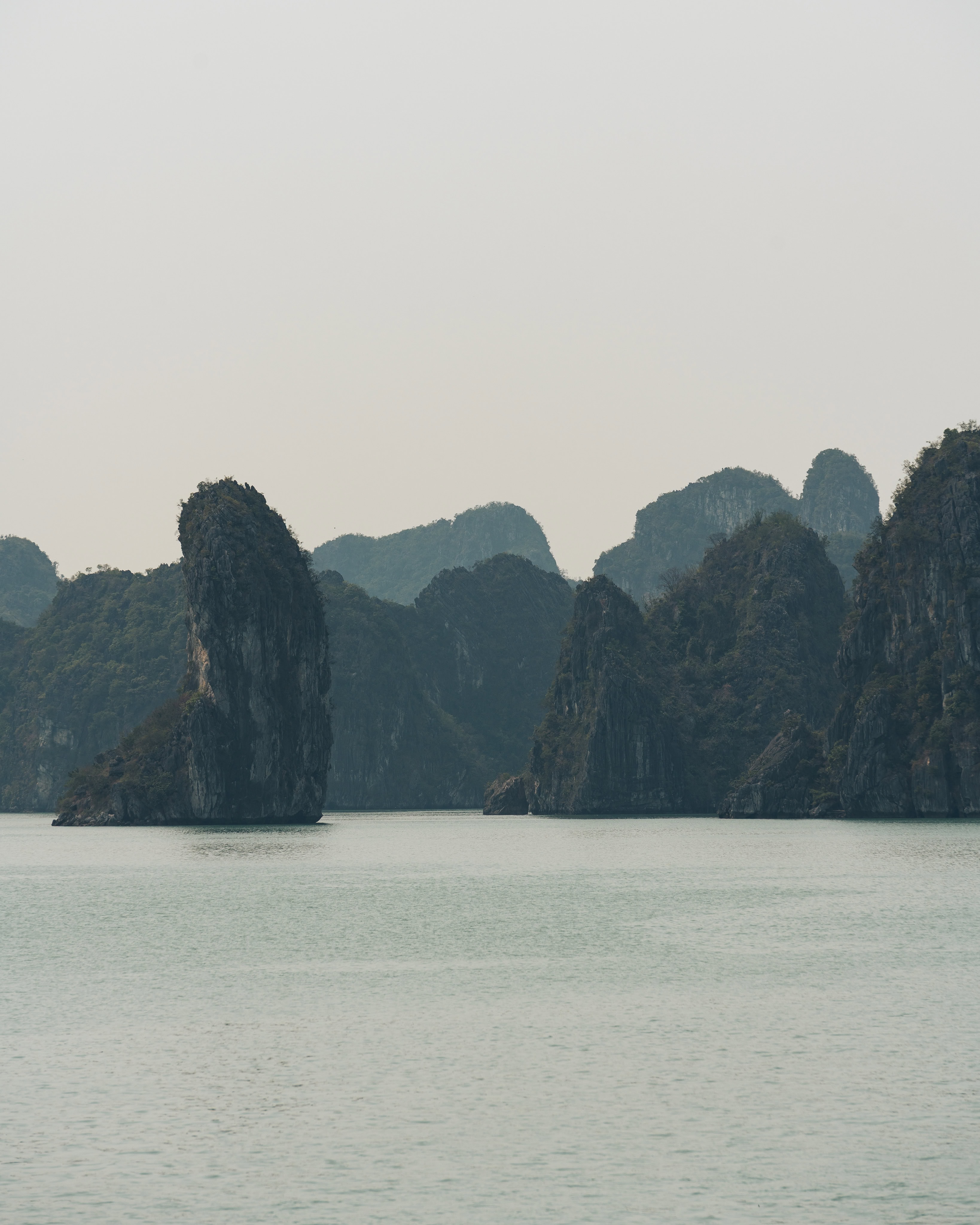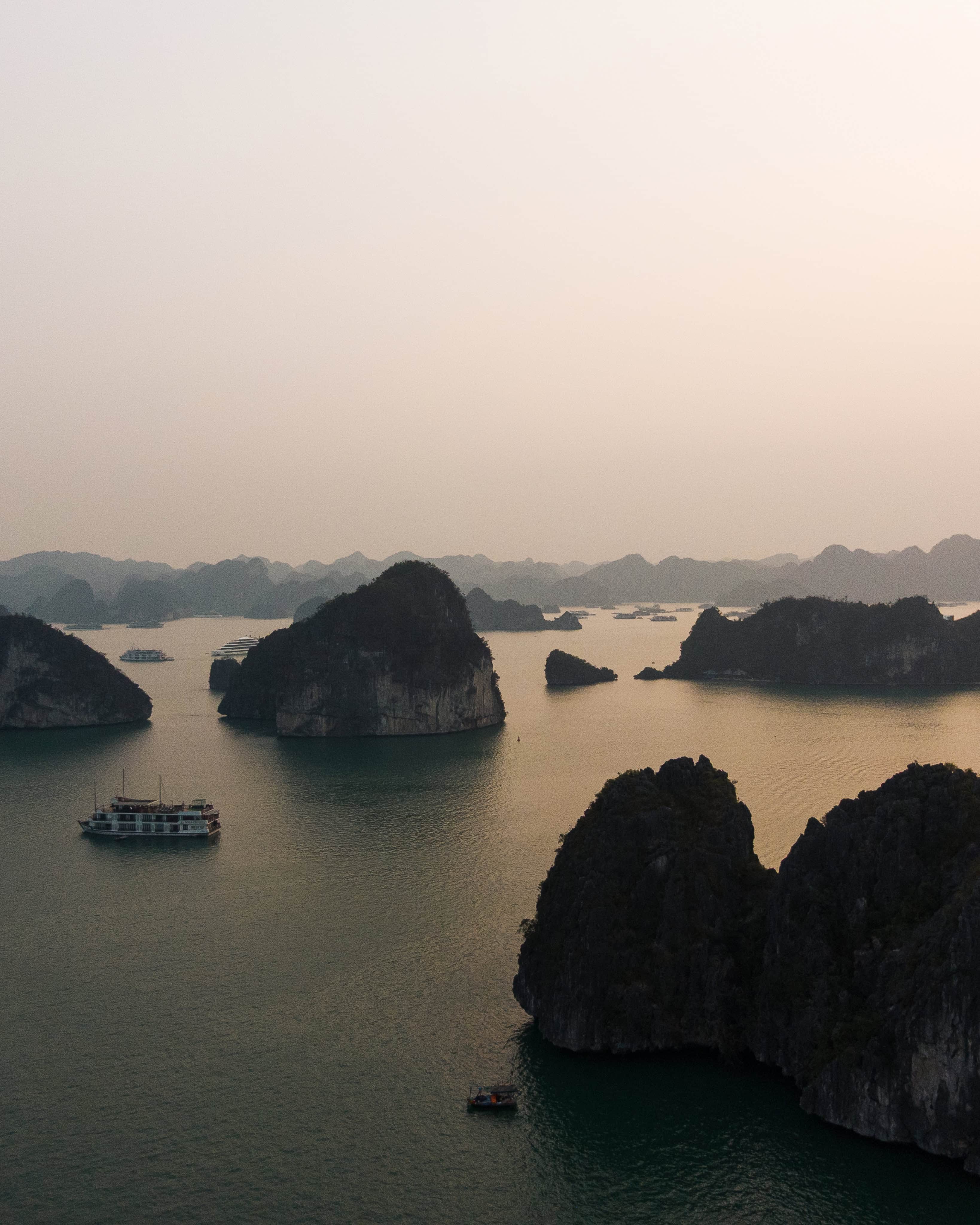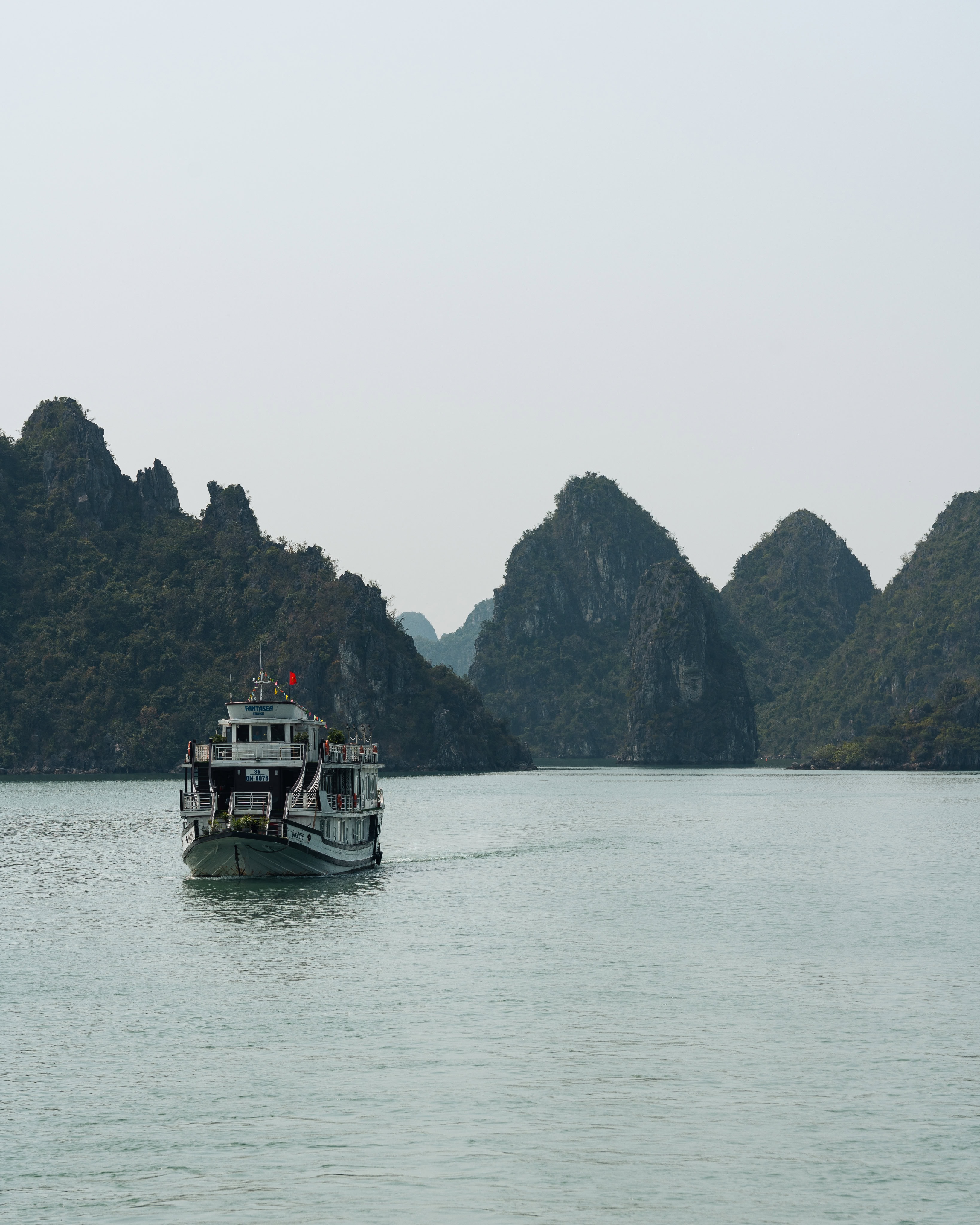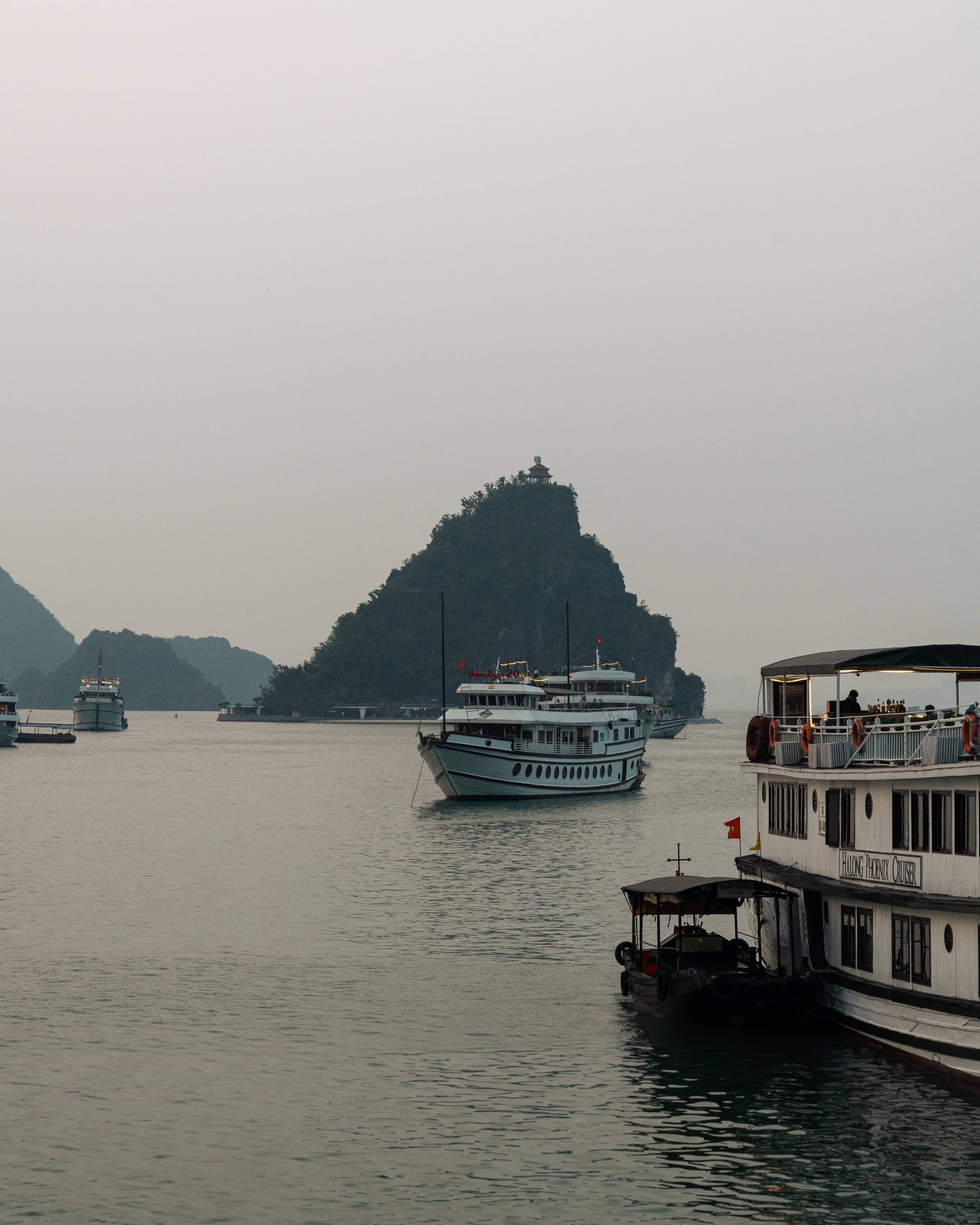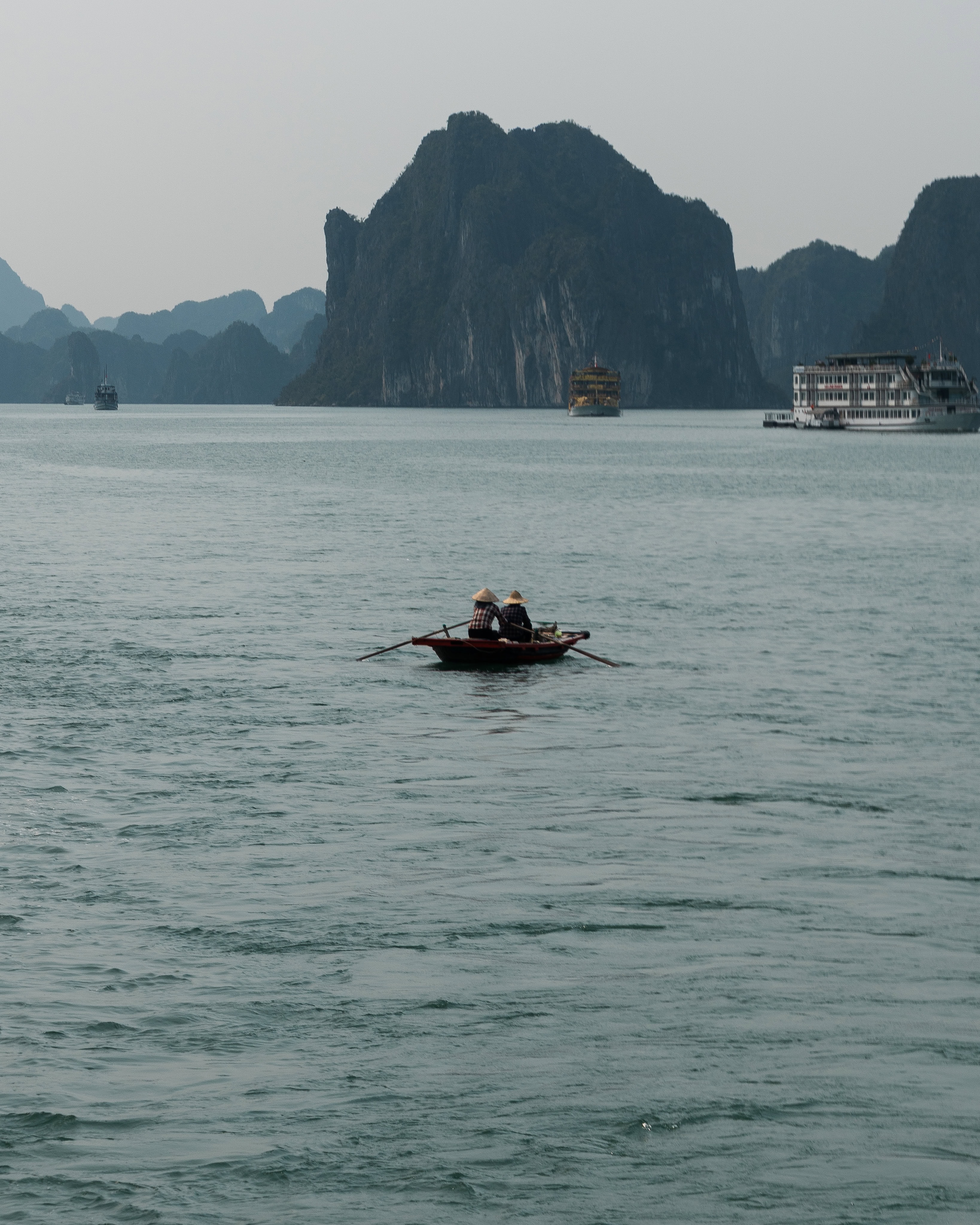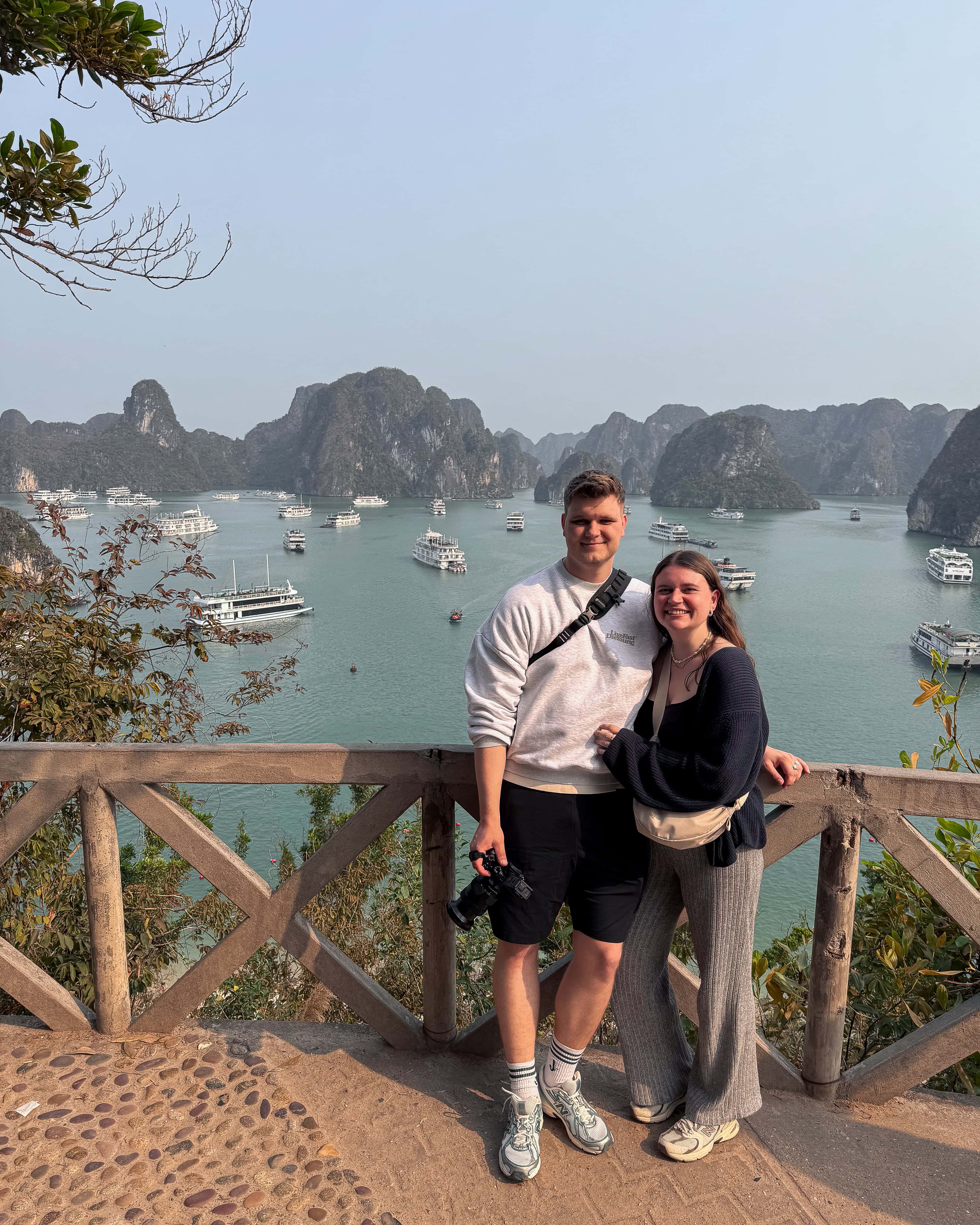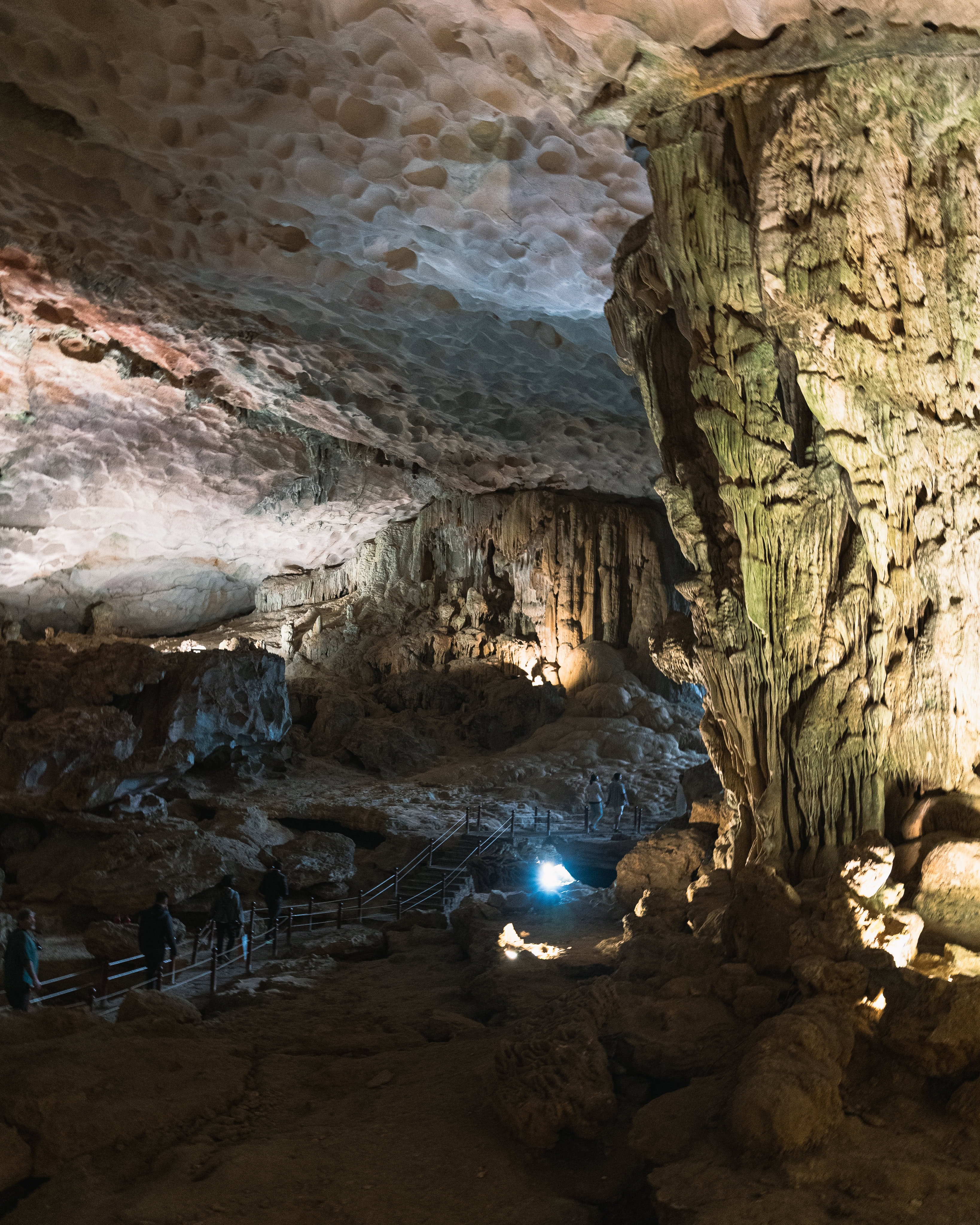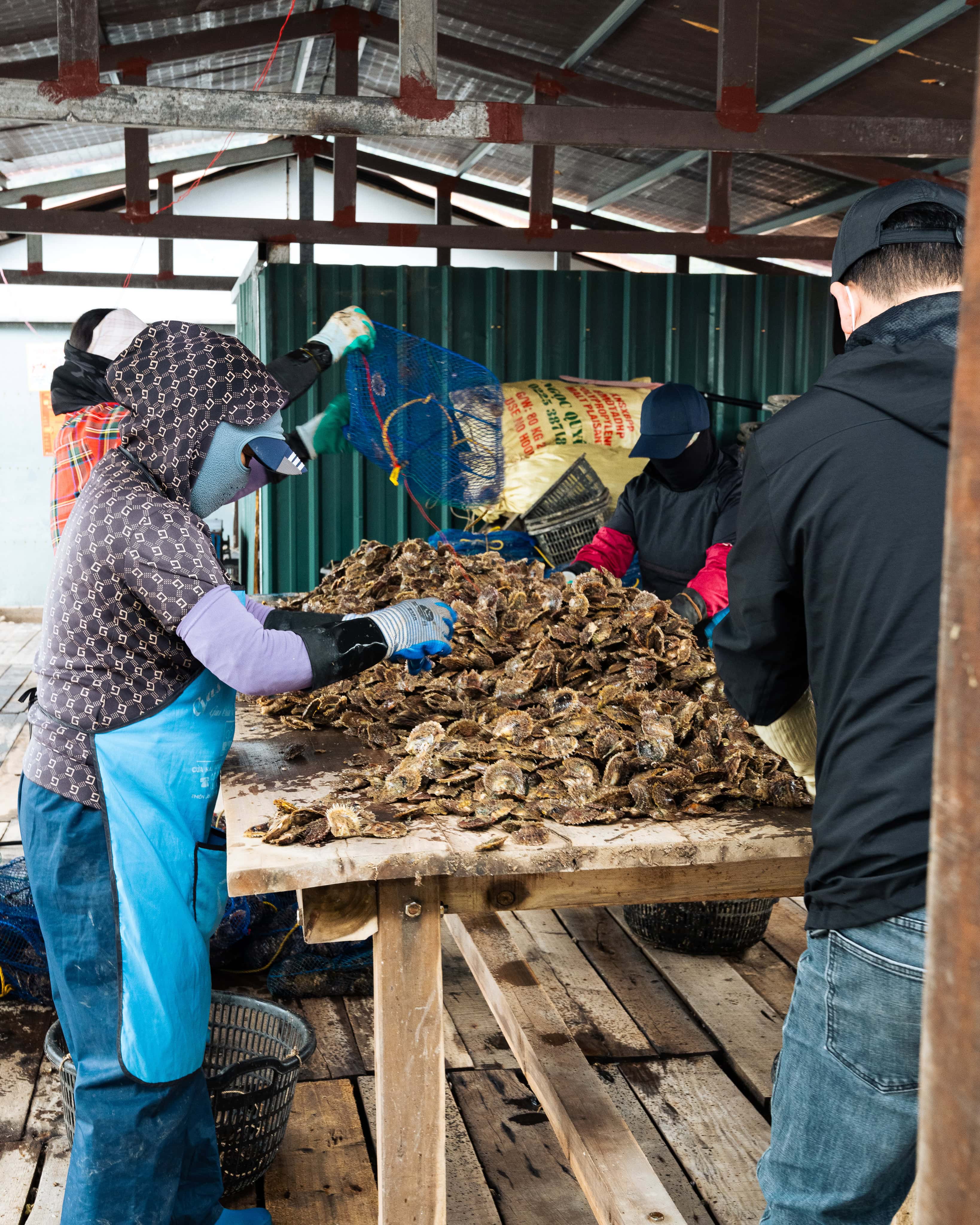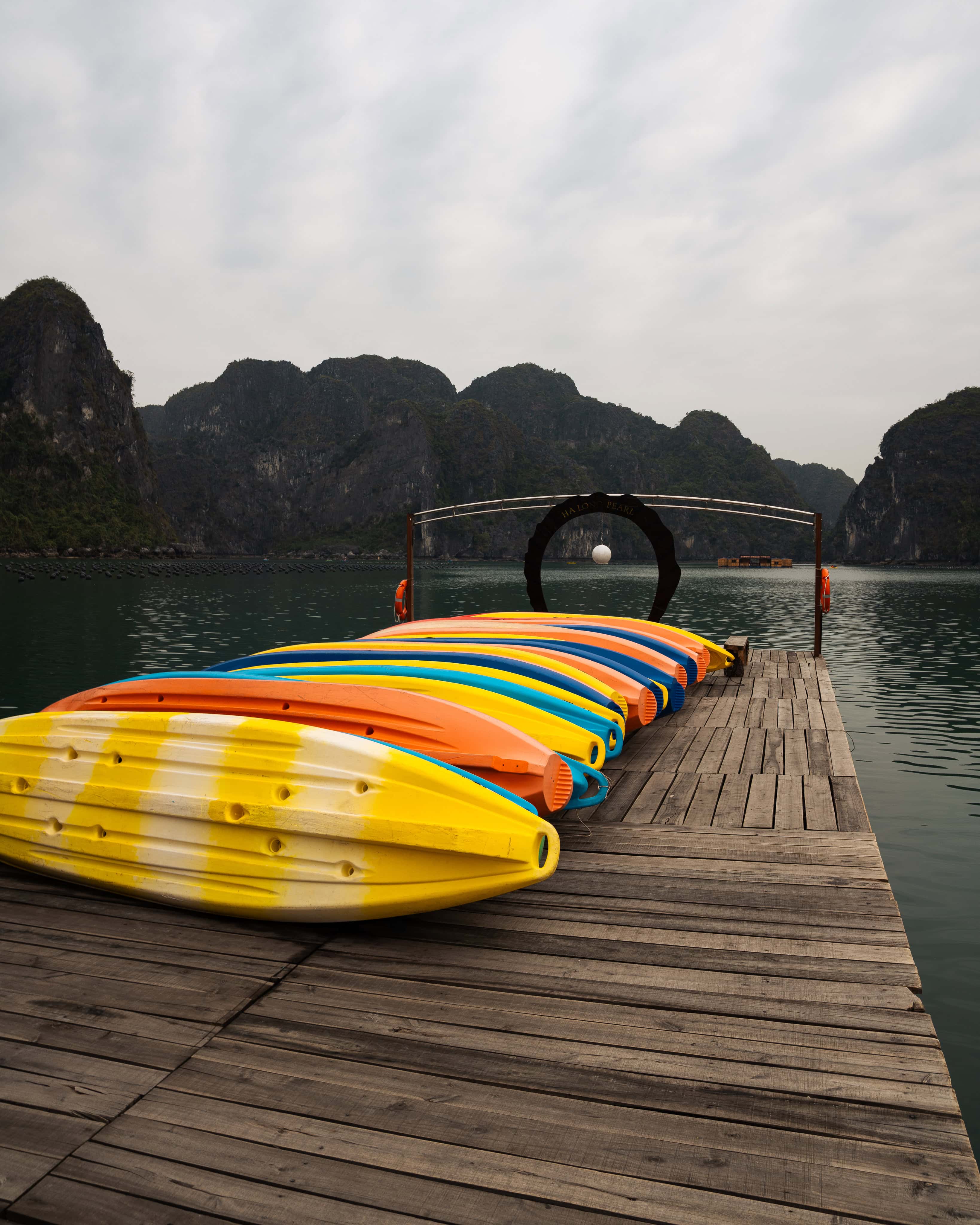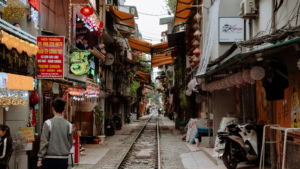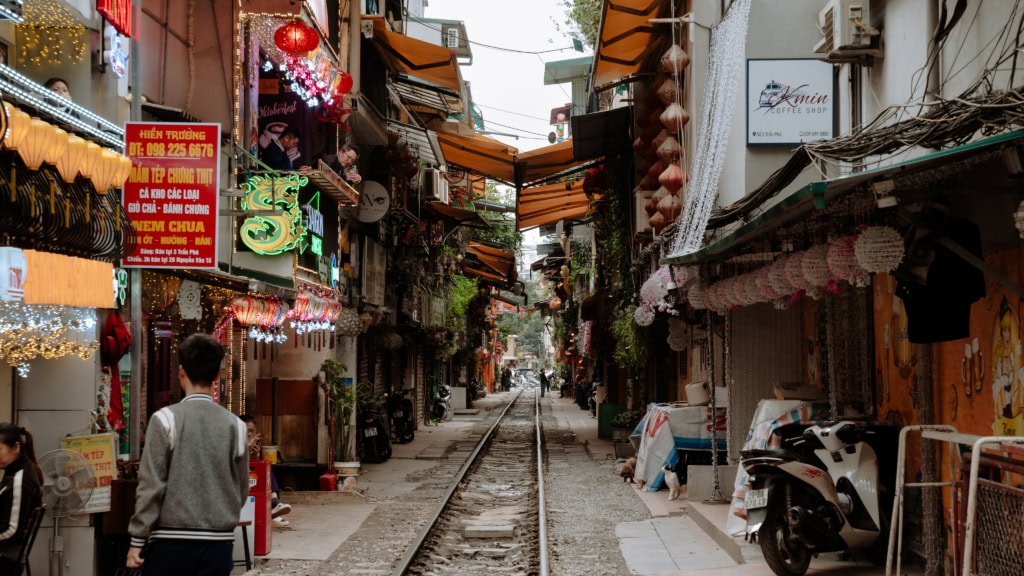Ha Long Bay, one of the seven natural wonders of the world, is one of Vietnam’s most stunning landscapes. With its emerald waters and thousands of limestone islands, it offers travellers an experience unlike any other.
Location and geography
Die Ha Long Bucht liegt im Nordosten Vietnams in der Provinz Quang Ninh und erstreckt sich über eine Fläche von etwa 1.553 Quadratkilometern. Sie besteht aus ca. 1.969 Inseln und Inselchen, von denen die meisten aus Kalksteinformationen bestehen, die im Laufe von Jahrmillionen durch geologische Prozesse entstanden sind. Das Gebiet ist bekannt für seine vielfältigen Karstlandschaften, darunter Kegelkarst (Fengcong) und Turmkarst (Fenglin), die durch ihre einzigartigen Formen und Strukturen beeindrucken.
History and cultural significance
Ha Long Bay is not only a geological masterpiece, but also a place with deep cultural and historical roots. Archaeological excavations in the region have shown that the bay and its islands were inhabited around 20,000 years ago. The earliest traces date back to the Soi Nhụ culture, followed by the Cái Bèo culture, which was characterised by its proximity to the sea and fishing activities. Later, the Ha Long culture developed, which dates back to around 3,500 BC.
The bay has always been an important habitat for coastal communities, where fishing, shellfishing and maritime trade have played an important role. Even today, people still live directly on the bay, for example in floating villages such as Cửa Vạn or Vung Viêng, where life is completely adapted to the water.
The legends surrounding Ha Long Bay are also deeply rooted in Vietnamese folklore. The name ‘Hạ Long’ literally means ‘descending dragon’. According to an ancient legend, the gods sent dragons down to earth to protect the Vietnamese people from invaders. These dragons spat out precious stones and jade, which became the limestone islands of today and served as a natural barrier against enemies. When peace was restored, the dragons stopped flying and stayed in the bay – hence the name.
UNESCO World Heritage status and recognition as a natural wonder
The extraordinary beauty and geological significance of Ha Long Bay was officially recognised by UNESCO in 1994. At that time, the bay was inscribed on the World Heritage List for its spectacular karst landscape and aesthetic uniqueness. This status was extended in 2000, this time focusing on the geomorphological and geological values of the region, in particular the unique karst processes and biodiversity of the bay.
In 2011, as part of the global ‘New7Wonders of Nature’ campaign, Ha Long Bay was officially selected as one of the seven new natural wonders of the world, alongside other icons such as the Amazon, Table Mountain and the Iguazú Falls. Millions of people from all over the world voted to recognise the extraordinary fascination of the bay.
Activities and experiences
There are many ways to explore Ha Long Bay, depending on your time budget, travel style and sense of adventure. From a relaxed day trip to a multi-day cruise, there is something for everyone. Each option has its own benefits and special features to consider when planning your trip.
- Cruise (1-2 nights): For those who want to experience Ha Long Bay in comfort and style. Ideal for couples, families or travellers with a medium to high budget.
- Day Trip: Good if time is short, but more superficial. Suitable if you don’t want to leave Hanoi for a long time.
- Cat Ba Island: For adventurers and independent travellers. Perfect for exploring Ha Long and Lan Ha Bay more cheaply and independently.
- Overnight stay in Ha Long City + day tour: For flexible planning with fixed return times and nights ashore – for example, if severe seasickness is an issue.
Each of these options offers a fascinating insight into one of Southeast Asia’s most impressive natural wonders – the important thing is to choose the one that suits your own travel style.
Our experience: A night on a boat
Our journey began with an early morning pick up in Hanoi. After a three-hour drive, we arrived at Ha Long Harbour where we boarded our cruise ship.
Day 1:
- Lunch: After checking in, we enjoyed a delicious lunch on board as the ship sailed out into the bay.
- Walk and beach visit: In the afternoon we docked at Ti Top Island and took a short hike to a viewpoint with stunning views of the bay. Afterwards we enjoyed some time on the beach.
- Cave exploration: Later we visited the Sung Sot Cave which fascinated us with its impressive rock formations and interesting history.
- Cooking lesson: Back on board, we attended a cooking class where we learnt how to make traditional Vietnamese spring rolls.
- Dinner and entertainment: After dinner we had a karaoke night which was great fun and entertainment.
Day 2:
- Early breakfast: We started the day with a light breakfast while the ship travelled to our next destination.
- Pearl farm visit and kayaking: We visited a local pearl farm to learn more about pearl farming. Afterwards, we had the opportunity to explore the surrounding waters by kayak.
- Brunch and return: After the kayaking, we enjoyed a hearty brunch as the boat sailed back to the harbour. From there we travelled back to Hanoi.
This experience gave us a comprehensive insight into the beauty and culture of Ha Long Bay and will remain unforgettable.
Ha Long Bay is a must for any visitor to Vietnam. The stunning scenery, rich history and variety of activities make it an unforgettable destination.

